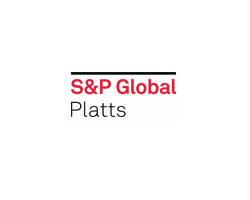Arch Coal Expects 2-3 Million Short Tons of Hard Coking Coal Demand From Section 232

By Hector Forster and Jonathan Fox
March 14, 2018 - Arch Coal expects additional domestic coking coal demand of 2 million-3 million st as a result of Section 232 import tariffs on steel spurring higher steel output, Seaport Global said after meeting company executives.
"The tariffs could eventually add around 5% to overall US met coal demand, all of which will be fed by US producers," Seaport analysts led by Mark Levin said.
"Increased US consumption might enable producers to get prices domestically that are at narrower discounts to seaborne ones," they said. "The real key, though, will be whether Section 232 brings meaningful retaliation from other countries and how that affects the overall market."
Export spot US coking coal prices tracked by S&P Global Platts have outpaced average US domestic contract pricing since 2015, according to data and estimates calculated by S&P Global Platts.
A key component in this comparison is railing and terminal fees, to establish coal pricing netback at the mine for comparison. Seaport expects rates to have increased recently.
Railroads "are generally capturing 15-20% of the value of the product," which would suggest current rail rates including port charges in the mid-$30s/st, up from closer to $30/st in 2017.
Arch expects potential 1-2%/year average global coking coal demand growth through to 2025, which would lead to around 40 million st of additional coking coal supply, Seaport said, citing the company's senior vice president for strategy Deck Slone.
Arch was not immediately available to comment out of US office hours.
Slone expects Australia will have to play a critical role in expanding production to meet demand, and is concerned about the lack of projects globally in current pipelines to ensure sufficient supply, it said.
Changes in Chinese import met coal appetite may, on the contrary, be a risk for met coal prices should a sudden drop hit the seaborne market's marginal supply and demand balance.
"BHP Billiton and many other larger miners don't seem to be spending much growth capital on their met coal businesses," Seaport said.
"With their increasing emphasis on using higher quality met coals to maximize coke times/minimize environmental issues and the coastal location of many of their larger blast furnaces, he thinks this is unlikely, but it is a risk given the unpredictability of Chinese policy decisions."
Arch's high-vol A Leer Mine, which has a stated reserve life of eight years, is considering developing an adjoining area in a $450 million project providing 3 million st/year, Seaport said.
The permitting process is ongoing and will take time, with production likely taking three years to start after investment approval, it said.
CoalZoom.com - Your Foremost Source for Coal News

